Dampness underfoot...
That a soggy rag I see?
It's a clean skid mark!
I should preface this post with two main points:
- No, I did not get any compensation from any person or entity for writing this post. This post only reflects my personal opinions and is not in any way sponsored
- No one should ever buy the ALEE mopping robot. It is terrible.
I really enjoy watching and doing teardowns of random stuff. Two of my favorite Youtube channels are AvE and bigclivedotcom (AvE's Juicero video is amazing). For electromechanical stuff, it's always a great learning experience to see how engineers designed for assembly, wiring, and actuator selection. Even for simpler for stuff, it's cool to see how the design cut corners and squeezed out more functionality with less. Products off of Aliexpress are great examples of that last point. Funds permitting, I'm hoping from here on out to regularly buy stuff that catch my eye and break them down to see how they work.
The ALEE mopping robot is a mobile unit that drags a wet rag on the floor, available for $85-ish USD on Aliexpress. There's a water reservoir you fill up that slowly drips onto a cloth sleeve covering the bottom of the robot, and when you turn it on, it seems to bounce back and forth across your room similar to how the OG roombas used to pseudo-randomly traverse rooms back in the day. At the time of purchasing, I didn't see any obvious sensors mounted on the robot, and my limited research only turned up this little wheeled module as a replaceable drive unit. I had originally thought that maybe there's be some nifty interior suspension for bump detection, or some utilization of the active rotation of the mop as part of the drive. The truth is a lot dumber but also (imo) a lot more amazing.
The "Cleaning" Behavior
The Guts
There's one motor. That's it, and it's a teeny motor without any encoders. The drive module isn't some sort of tiny differential drive with concentric shafts or anything. It's just a bevel gear transmission that runs both wheels at the same rate. The detachable wheel-pair and actuator are mounted to a central panel that's spring-loaded vertically at four points relative to the outer body. The outer body enclosing the water tank and electronics can only translate slightly up/down (with minimal parasitic motion in xy due to assembly clearances). There's no rotation of the outer body and drive assembly, though the wheel-pair will spin freely when the wheels aren't contacting the ground. The actuator itself has an initial belt drive but then a standard spur drive transmission afterwards. The belt presumably is to absorb some of the impact when the bot body bumps into stuff.
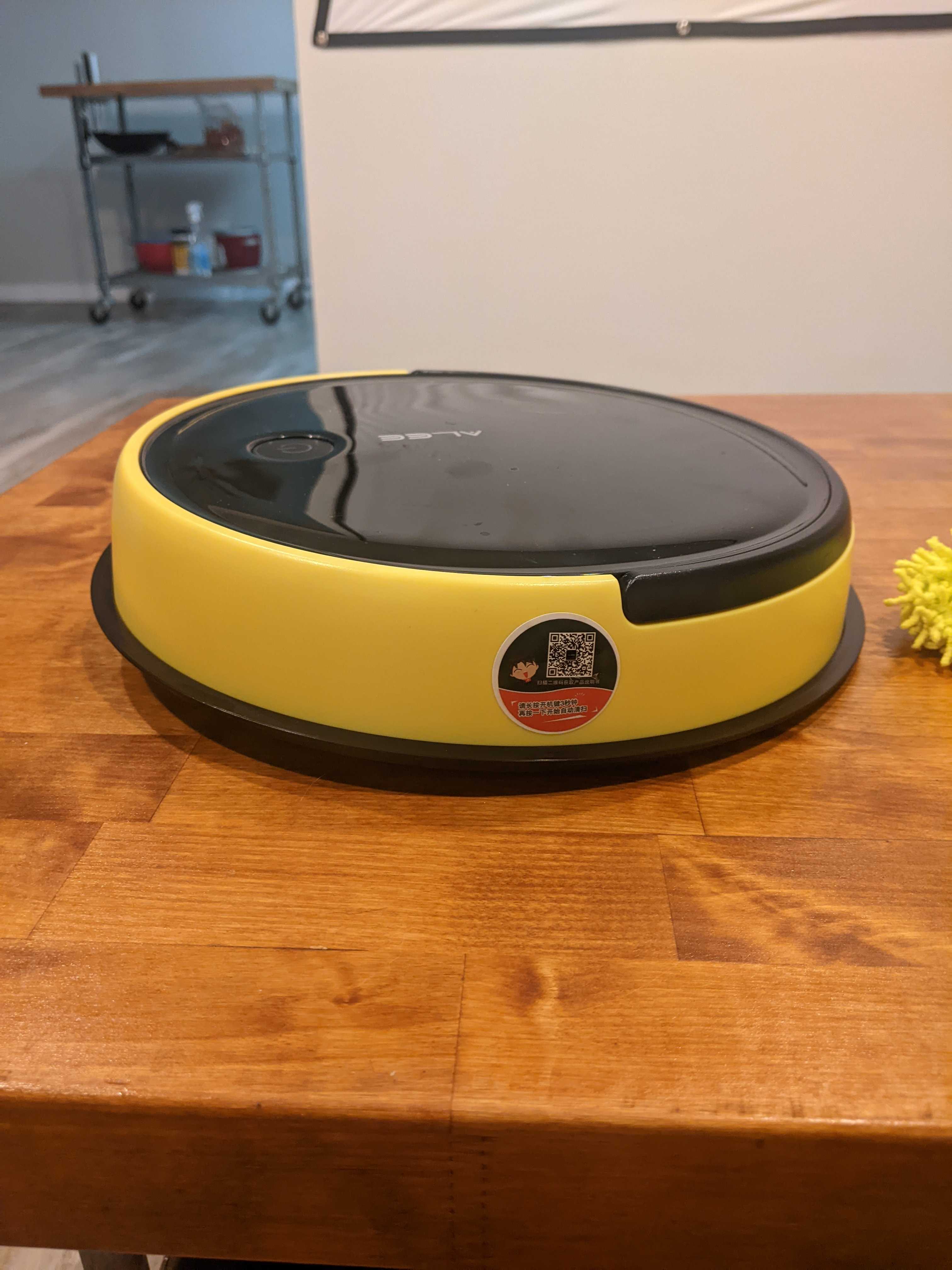
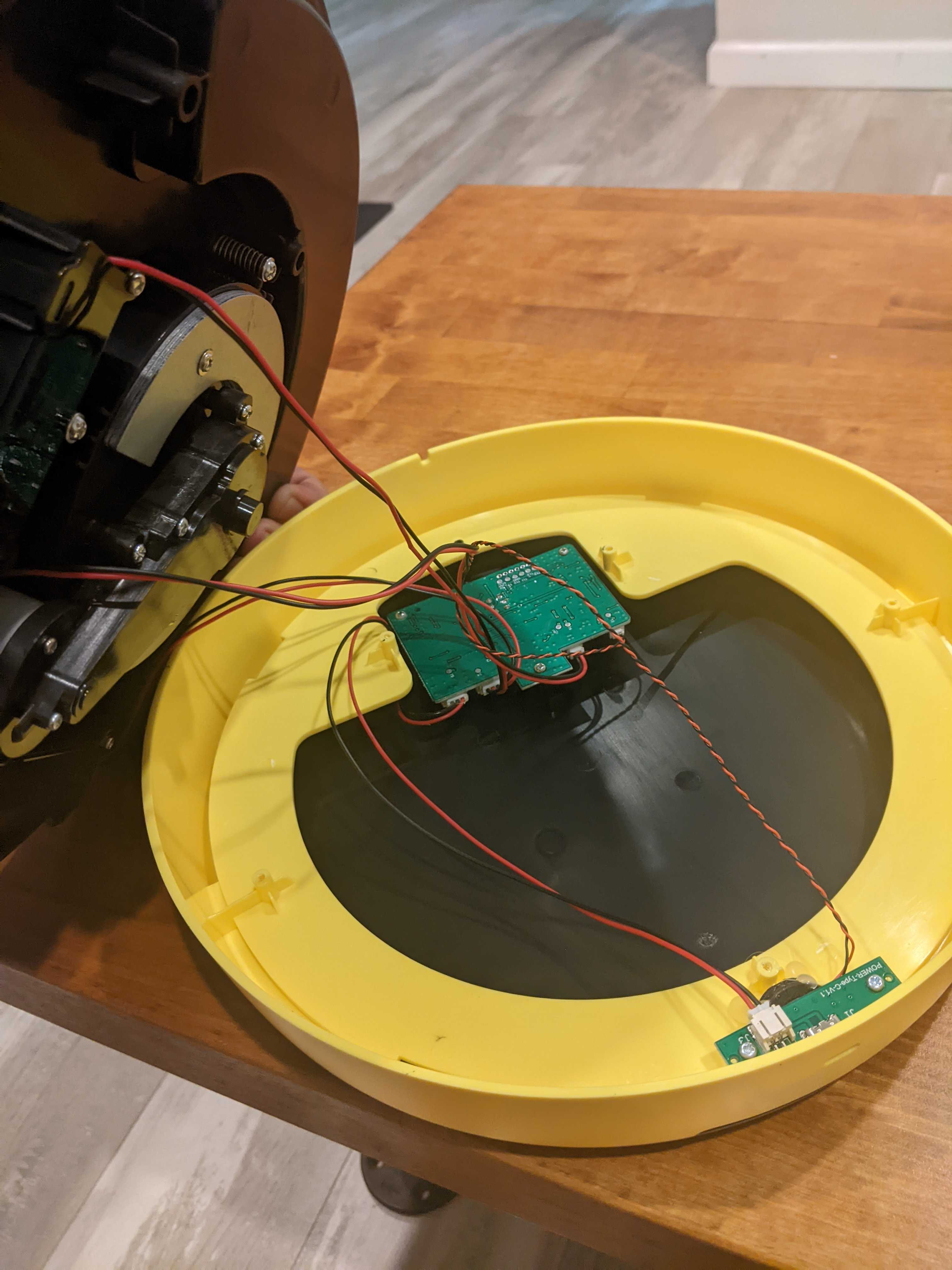
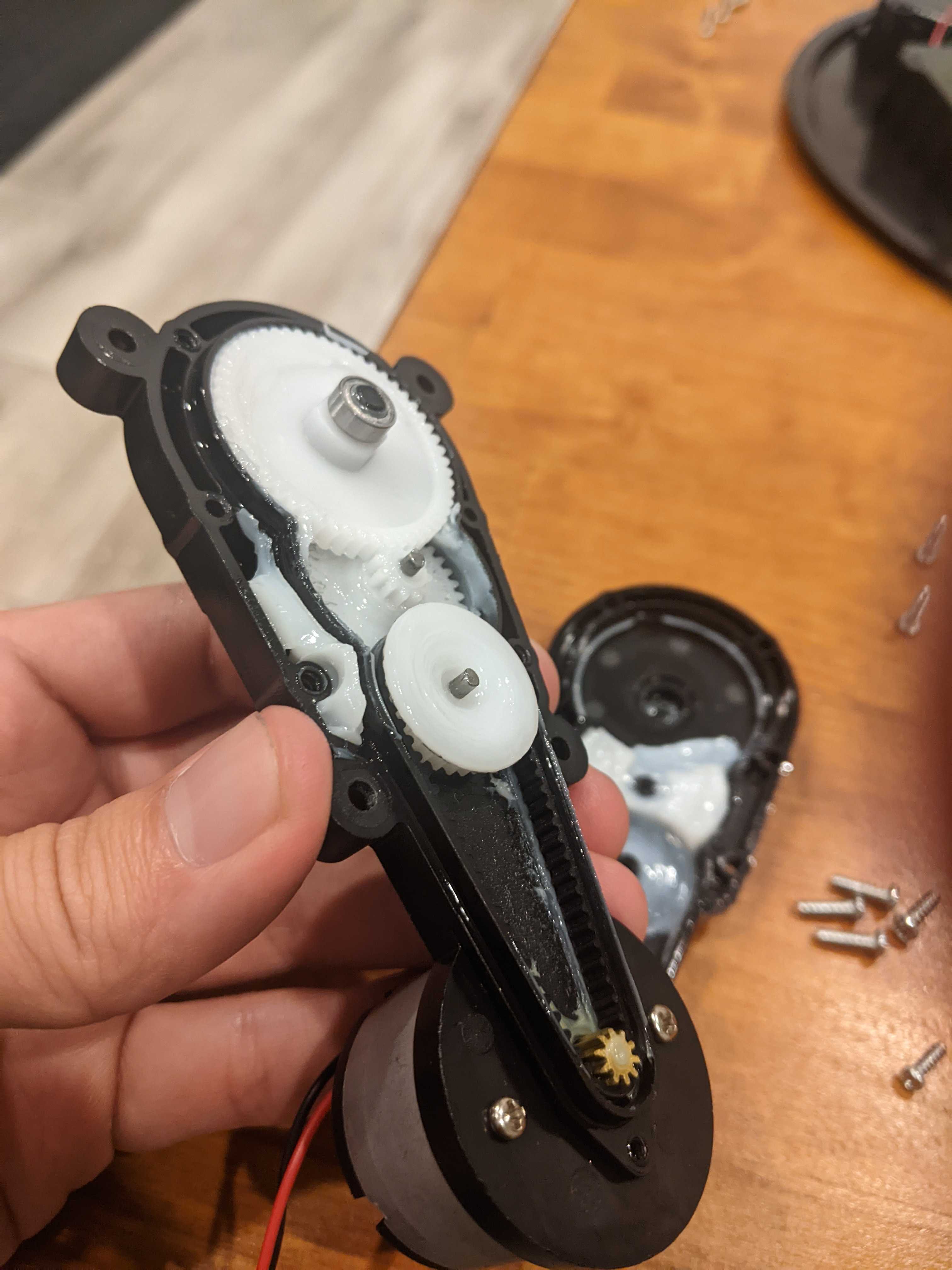
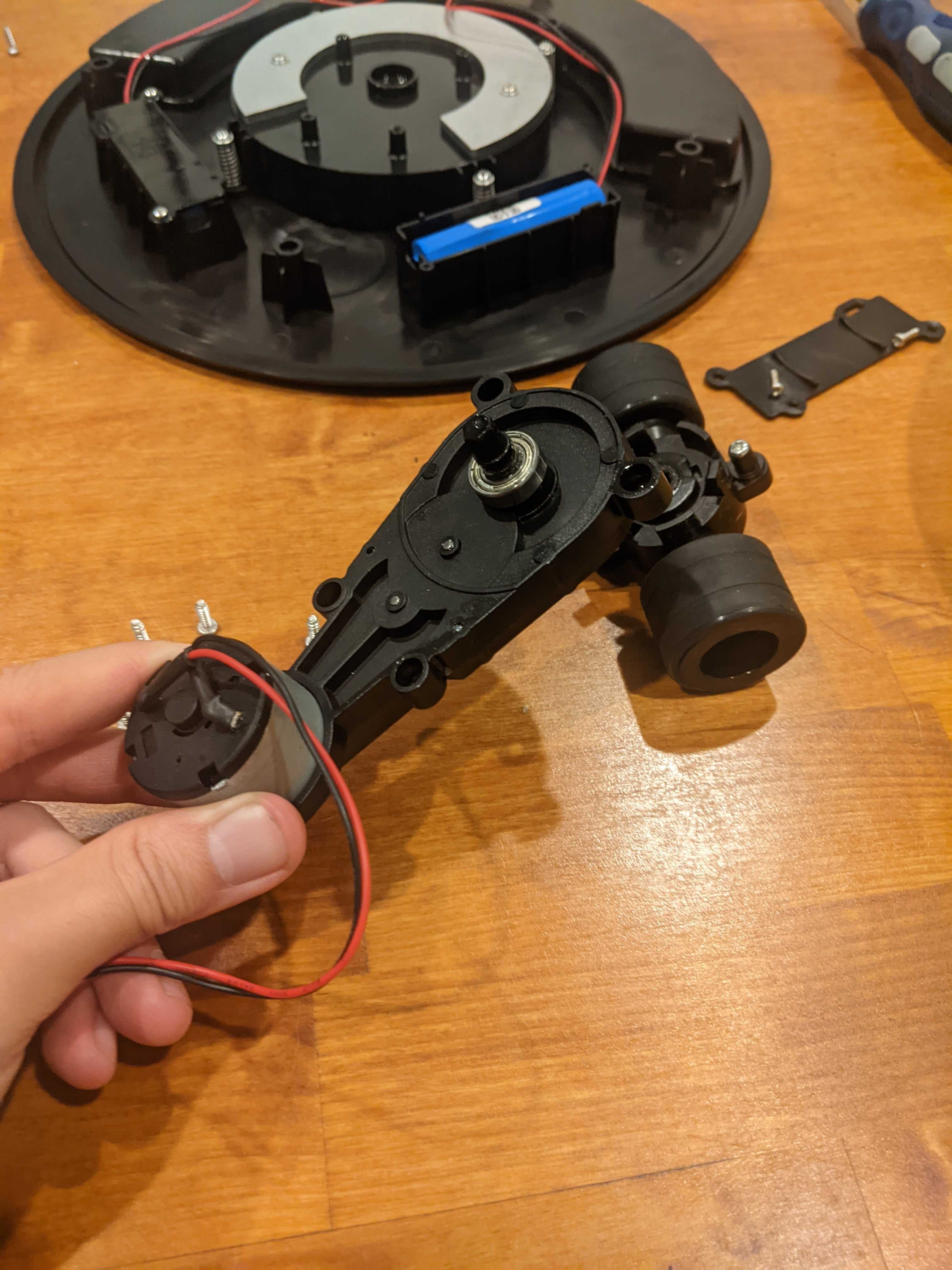
The Drive Mechanics
I should note that I'm guessing at some of the behavior here. Like I mentioned above, there's no bumper or proximity sensors. In playing around with the wheel-pair, you can (sort of) see below how it changes direction once you forcibly stall it. My guess is that the "navigation" of the bot, so-to-speak, is limited to changing direction once a current spike is detected. That's all the control board does (aside from playing back a cute intro dialogue in Chinese).
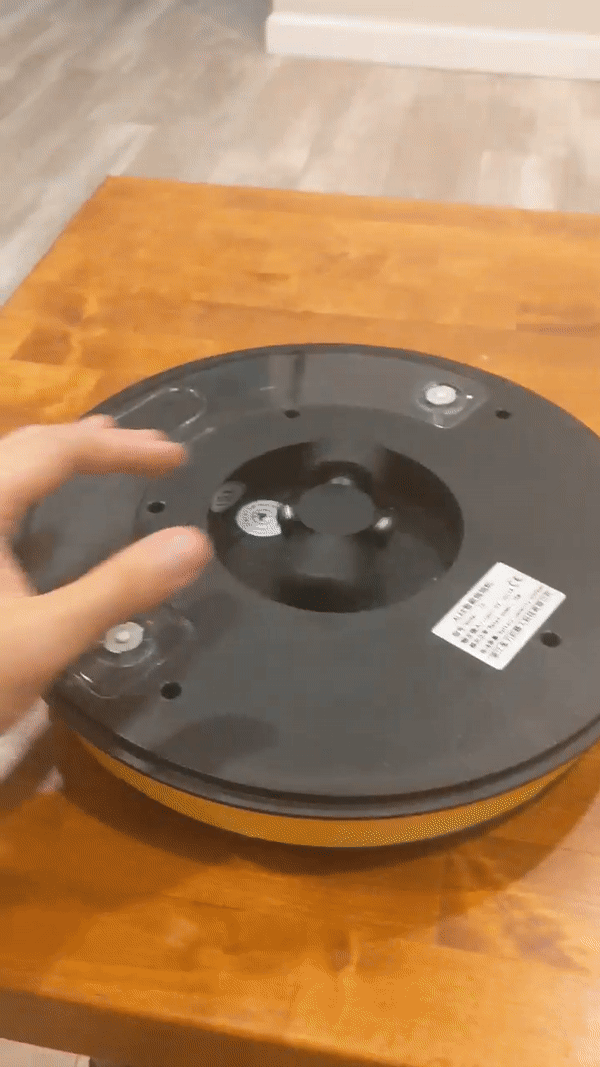
So how does this thing do anything more than just run back and forth? Three points make a plane, and we have at least two reaction torques at work: the torque from the two wheels rotating, and the torque at the bevel gear. If I were to hold onto just the wheel pair and not allow it to touch the ground, the entire body of the bot would spin at the point where the wheel pair attaches to the body. With the wheels on the ground, the bot body is tilted back due to the drive wheels to form that 3rd point. Assuming the wheels don't slip, there will be some net rotation of the bot body relative to the direction of the travel dictated by the wheel pair, and that gives us the primary "cleaning" motion of the cloth pad. The four springs change how the two wheels grip the ground during collisions, which presumably is sufficient to generate some minute turning behavior such that this thing doesn't just bounce back and forth in a straight path between walls.
It's fascinating that this thing is able to achieve something that even somewhat resembles a cleaning/scrubbing motion profile with just a single motor. I'm both astounded at the cleverness of the mechanism and disappointed that I so easily shelled out $85 for it.
Again, don't buy this.